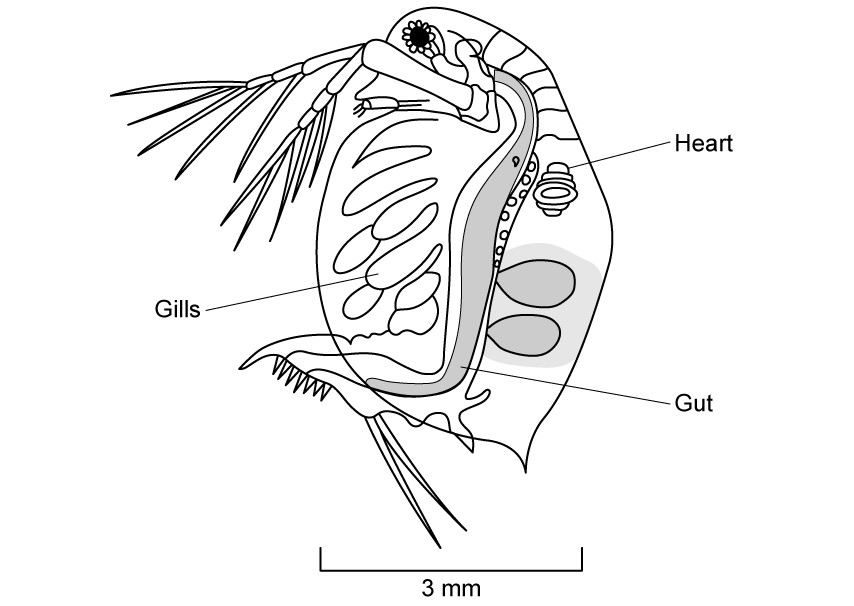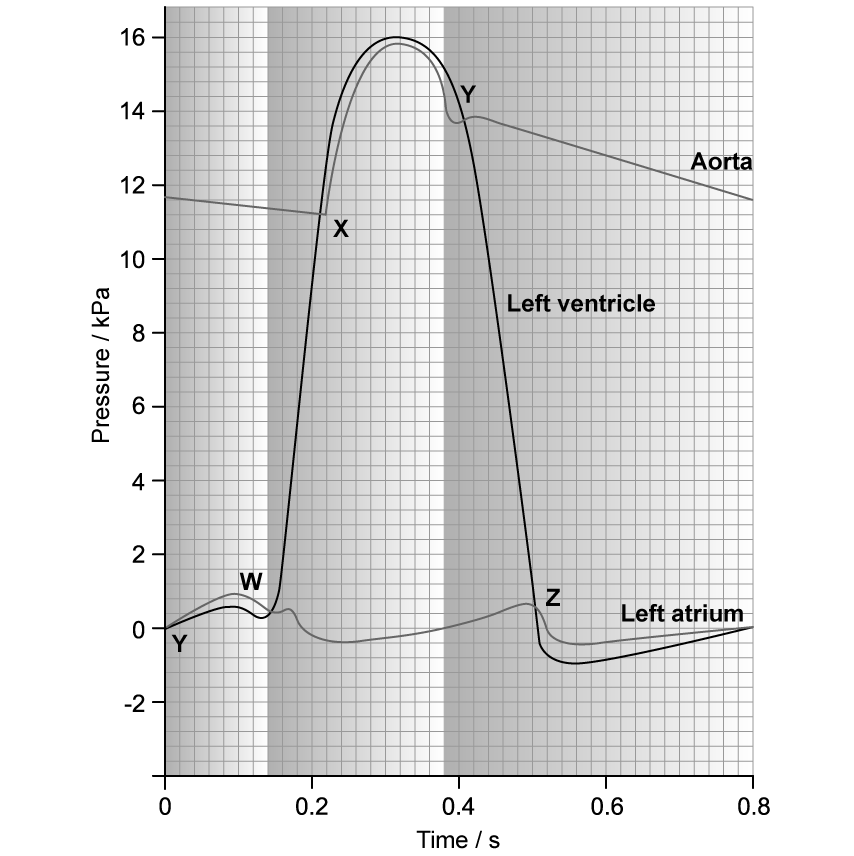Question 1
Which was a feature of Galen's theory of blood flow prior to his theory being superseded by that of William Harvey?
Blood flows in a closed loop
Blood is constantly re-used throughout a day
The heart is a pump
Blood flow is bidirectional
Which was a feature of Galen's theory of blood flow prior to his theory being superseded by that of William Harvey?
Blood flows in a closed loop
Blood is constantly re-used throughout a day
The heart is a pump
Blood flow is bidirectional
A student studied the structure of a blood vessel and found:
Which vessel was the student studying?
Vein
Capillary
Venule
Artery
The aquatic crustacean the water flea (Daphnia magna, pictured below) has a heart that pumps blood-like liquid called hemolymph around its body cavity. 
Which statement about Daphnia magna's circulatory system is correct?
single closed
single open
double closed
double open
The graph shows changes in pressure at various stages of the cardiac cycle.

Which statement describes the events at point Y of the graph?
Ventricular systole
The ventricle contracts
↓
Pressure in the left ventricle goes higher than in the aorta
↓
Aortic valve opens and blood is forced into the aorta
Early diastole
Left ventricle is empty
↓
Muscles in the walls of the left ventricle relax and pressure drops below the pressure in the aorta
↓
Aortic valve closes
Diastole
The relaxed left atrium fills with blood, causing the pressure in the atrium to exceed that in the empty ventricle
↓
The AV valve opens
Late diastole
There is a short period of time during which the left ventricle expands due to relaxing muscles
↓
This increases the internal volume of the left ventricle and decreases the ventricular pressure
↓
At the same time, blood is flowing slowly through the newly opened AV valve into the left ventricle, causing a brief decrease in pressure in the left atrium
↓
The pressure in both the atrium and ventricle then increases slowly as they continue to fill with blood
Which is not a feature of the sinoatrial node (SAN)?
It acts as a natural pacemaker
It is formed from a group of highly specialised muscle cells
It occupies the area between the right atrium and the right ventricle
It sends out a wave of electrical activity, causing contraction, across both atria and both ventricles